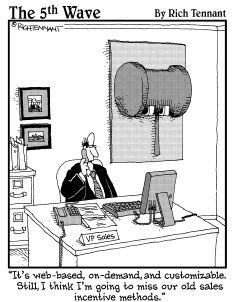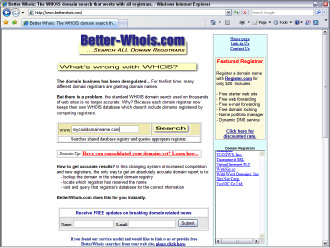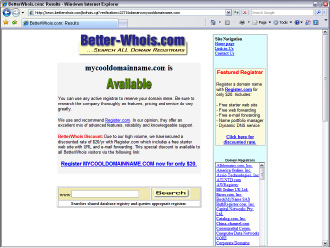Building Web Sites All-in-One For Dummies® (91 page)
Read Building Web Sites All-in-One For Dummies® Online
Authors: Claudia Snell

Book VII
E-Commerce

Chapter 1: An E-Commerce Primer
In This Chapter
Establishing a domain name
Serving your Web catalog to customers
Accepting payments with PayPal
Getting paid with credit cards
Using a secure server
Your client is an entrepreneur with a product or service for sale and wants to take the business to the next level. Or perhaps you're creating a Web site for a bricks-and-mortar business that wants to kick it up a notch. Your solution for either client is quite simple: Design an interactive e-commerce site for your client. When done correctly, an e-commerce site makes it possible for your client to conduct business worldwide, 24 hours a day, 7 days a week. That's right â a store that never closes.
Of course, any venture has its pitfalls. Your goal as a Web designer is to create an attractive, interactive site that your client's customers can easily navigate. In addition to the usual bells and whistles you'll include on an interactive site, you also need to provide some method with which Web site visitors can order and pay for their wares as well as a method for your client to collect her money. In this chapter, you see basic e-commerce concepts such as setting up the site, working with credit card authorization packages, and obtaining a secure server.
Nailing Down E-Commerce Concepts
If you build it, they will come. Not! The world of e-commerce enables a merchant to branch out and present her service or product to a worldwide audience. However, if the merchant doesn't address certain issues, the site won't succeed. It often falls on the shoulders of a savvy Web site designer â and that would be you, reader â to advise your client. The following sections show you what to consider when creating an e-commerce site.
Establishing an online identity
Every Web site has a domain name â it's a law. A
domain name
is unique, like a phone number. When entered in the Address field of a Web browser and preceded by
www.
, it leads the flock to the proper Web site. The domain name for an e-commerce site should serve two functions:
⢠Describe the business to potential customers
⢠Navigate to the merchant's online catalog
Your client might already own a domain name. However, if the name doesn't fit, you must not quit even if your client thinks the domain name is the most clever thing since the invention of the fork. When you cross this “fork” in the road, recommend to your client to register a more appropriate name. After all, you can register a domain name rather inexpensively these days. In fact, domain registration is free with many Web hosting packages. (And, the client is paying you for your wisdom and foresight, too.)
So what's in a name? Everything. The domain name should be easy to remember, be short, and tell something about the business. The name should also be unique. For example, people associate the Amazon.com domain with the largest online seller of books â and other assorted sundries â in the world. A domain name of Isellbooks.com, tells the visitor about the business, but it's not unique, and it's not short.
If your client already has an established bricks-and-mortar business, use that name, or a clever derivative thereof, as the domain name. For example, if your clients are attorneys and their domain name is carnettsmithLaw.com, consider changing it to Cslaw.com. Many firms personalize a domain name by using the word “my” as part of the domain name: for example,
mycslaw.com
.
Researching domain names
As we mention earlier, a domain name is like a phone number. When a Web surfer enters the domain name into the Address field of a browser window, the browser refreshes to the Web site's home page. That's right: Domain names are unique. Each of the zillions of Web sites out there has a unique name. When you or your client is trying to come up with a unique domain name for the e-commerce site you're designing, you can quickly cut to the chase and figure out whether a domain name has already been reserved by following these steps:
1.
Log on to the Internet and navigate to
www.betterwhois.com
.
You can research a domain name at most
registrars
(the companies that take your money in exchange for registering a domain name). However, you can use the free Better-Whois.com service to search all domain registrars to see whether the name has been reserved.
2.
Enter the desired domain name in the Search field, as shown in Figure 1-1.
Figure 1-1:
Find out whether a domain name is available.

3.
Click the Search button.
You're prompted to enter the security code shown on your monitor.
4.
Enter the security code and then click Continue.
The domain registrar databases are searched. If the domain name is reserved, a message to that effect appears on the results page. If the domain is reserved, you can get further information about the domain by clicking one of the links. If the domain name is available, the Web page refreshes with a message to that effect, and you have the opportunity to register the domain name, as shown in Figure 1-2.
 If the desired domain name isn't available, see whether the same name is available with a different domain name suffix. Most businesses like to register their domain as a top-level (
If the desired domain name isn't available, see whether the same name is available with a different domain name suffix. Most businesses like to register their domain as a top-level (
.com
) domain. However, the
.net
,
.biz
, and
.info
suffixes are also acceptable for e-commerce sites.
Figure 1-2:
If you like the domain name, book it Dano.

 GoDaddy.com might well indeed be the granddaddy of all domain registrars. You can search for a domain at this site. If the desired domain name isn't available, the results page lists derivatives your client might want to consider.
GoDaddy.com might well indeed be the granddaddy of all domain registrars. You can search for a domain at this site. If the desired domain name isn't available, the results page lists derivatives your client might want to consider.
Purchasing domain names
After you find an available and desired domain name, you can reserve the domain by purchasing it. Domain registrars are not regulated. There are many from which to choose. You can reserve a domain name for as little as $6.95 per year. However, make sure you research the domain registrar before reserving the name with them. Many of the low-price registrars come with strings attached, or they try to sell you Web hosting along with the domain name. And the Web hosting provided by the domain registrar might not be applicable for e-commerce.
Many Web hosting services include domain registration as part of their hosting fee. Of course, your client is responsible for renewing the domain name after the registration expires. Sometimes, you can get a better deal if you register the domain for longer than one year. Like everything else on the Internet, the price of registering domains is in a constant state of flux. If you do a bit of research before registering your client's desired domain name, you'll find the best package currently available. Just type
domain registrars
into your favorite search engine and you'll have enough results to keep you busy for a few hours.
 If you can get your desired domain name with the
If you can get your desired domain name with the
.com
suffix, consider purchasing
.net
,
.biz
,
.info
, and
.org
suffixes for your domain name as well. This enables your client to prevent competitors from registering your client's domain name with other suffixes. It's also good practice to register misspellings of the chosen domain name so parasites won't create a domain with similar spellings to ride on the coattails of your client's successful site.
 Just because a domain name has been registered doesn't mean that it's being used. Many domain name brokers buy names on speculation. Unused domain names can be purchased. You might be able to purchase your desired, but currently registered, domain name from a company such as BuyDomains.com or Afternic.com.
Just because a domain name has been registered doesn't mean that it's being used. Many domain name brokers buy names on speculation. Unused domain names can be purchased. You might be able to purchase your desired, but currently registered, domain name from a company such as BuyDomains.com or Afternic.com.
Choosing an e-commerce-friendly server
Web hosting services are a dime a dozen these days, or so it seems. Choosing the right server can mean the difference between a successful e-commerce site and one that fades into oblivion after a few hundred visitors. Web hosting services offer a variety of features. The following sections offer some sage advice for choosing a Web hosting service for your e-commerce site.
